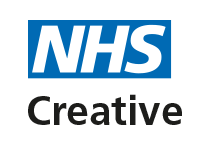10 tips for copyediting
Is that text really ready to go to the designer?
You’ve been typing away, busily writing your report, leaflet or poster copy and you’re keen to send it on its way but is your text ready to go to the designer? Probably not! You’ll want the best end product so here are some simple tips to help you achieve this:
1: Take a break.
Set your text aside for a while after you’ve finished composing, and then proofread it with fresh eyes. Rather than remember what you meant to write, you’re more likely to see what you’ve actually written.
2: Take it one stage at a time.
Don’t rush yourself or try to do too much too quickly. Read through your text several times, concentrating first on sentence structures, then word choice, then spelling, and finally punctuation.
3: Double-check facts, figures, and proper names.
Get your facts straight, even if it means re-visiting your research. It’s not just about correct spelling and usage; make sure that all the information in your text is accurate. For example, don’t assume someone’s name is spelt the way you think it should be.
4: See your text in print.
By printing out your text, it’s easier to review it line by line and reading your work in a different format may help you catch errors that you previously missed.
5: Hear your text.
Read aloud or ask a friend to read it to you. You may hear a problem (for example, a missing word) that you haven’t been able to see.
6: Make the most of spellcheck.
The spellcheck facility in your wordprocessing package can help you catch common errors, but don’t ever think it’s foolproof.
7: Trust your dictionary.
Your spellchecker can tell you only if a word is a word, not if it’s the right word. For instance, if you’re not sure whether sand is in a desert or a dessert, your dictionary can tell you.
8: Read your text backward.
Another way to catch spelling errors is to read backward, from right to left, starting with the last word in your text. Doing this will help you focus on individual words rather than sentences.
9: Create your own checklist.
You’ll soon see what type of mistakes you commonly make, so list them for future reference.
10: Ask for help.
Invite someone else to proofread your text after you have reviewed it. A new set of eyes may immediately spot errors that you’ve overlooked.


